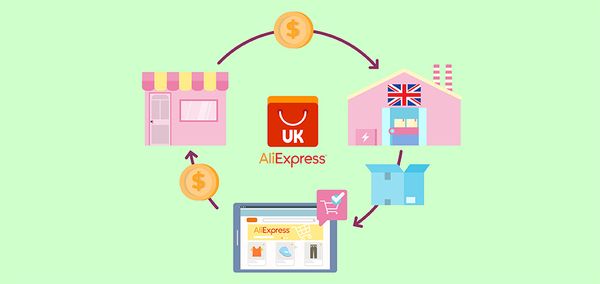How to Start a Business With No Money

Even without a substantial startup budget, aspiring entrepreneurs can still turn their business ideas into reality. A lack of capital doesn't have to be a roadblock to entrepreneurship. There are numerous ways to launch a successful venture with limited upfront investment. The good news is that it's more possible than ever to launch a successful business with little or no upfront capital. In this article, we'll outline the steps you can take to start a business without money.
9 Steps to Start a Business With No Money
It is more possible than ever to launch a successful business with little or no upfront capital. Here are the 9 steps to start a business with no money.
Step 1: Choose Your Business Idea
The first step is to identify a viable business idea that you're passionate about and that has the potential to succeed with minimal startup costs. If you don’t have free resources or personal savings, check the following business ideas that are well-suited for a no-money launch.
Freelance Services
One of the most accessible options is offering freelance services in writing, graphic design, web development, or digital marketing. The gig economy has made it easier than ever to build a client base and generate revenue as a freelancer. By marketing your skills online and utilizing platforms like Upwork or Fiverr, you can start earning income without the need for a physical office or large overhead.
E-Commerce & Dropshipping Businesses
Similarly, e-commerce and online retail businesses have become increasingly viable for entrepreneurs with modest resources. Whether you're selling your products, leveraging a dropshipping model, or curating a virtual storefront, the ability to reach global customers through an online platform opens the door to entrepreneurship. With platforms like Shopify, WooCommerce, and Etsy, you can build and launch an e-commerce business with minimal startup costs.
Mobile Services
Another intriguing option is to capitalize on the growing demand for mobile services. From food trucks and car washes to lawn care and house cleaning, businesses that bring their offerings directly to customers are well-suited for a lean, asset-light startup approach. By investing in a mobile setup rather than a traditional brick-and-mortar location, you can minimize overhead and quickly begin generating revenue.
Online Teaching & Tutoring
Online teaching and tutoring also present lucrative opportunities. As remote learning continues to gain momentum, the ability to offer classes, coaching, or academic support through digital channels allows you to scale your impact and earnings without extensive infrastructure. Platforms like Udemy, Skillshare, and Teachable make it easy to create and monetize your own educational content.
App & Software Development
For the more technically inclined, app and software development can be a rewarding path for the on the budget-conscious entrepreneur. By leveraging no-code or low-code tools, you can build and launch innovative digital products without extensive programming knowledge or resources. Alternatively, you could explore the world of affiliate marketing, leveraging your online presence to promote and earn commissions on other companies' offerings.
Consulting or Coaching Services
Finally, consider the potential of consulting or coaching services. Whether you're an expert in a particular industry, a seasoned professional, or a skilled life coach, you can capitalize on the growing demand for specialized guidance and support. By positioning yourself as a trusted advisor and establishing your brand online, you can build a thriving business without relying on physical assets or inventory.
The key is to choose a business idea that aligns with your skills and interests, has low overhead, and can be started and operated primarily online or through a mobile platform.
Step 2: Conduct Market Research
Once you've identified a potential business idea, it's crucial to validate the market demand and understand your target customers. This market research can be done largely for free using online tools and resources.

|
Manage Multiple Stores In One Account Multiple Stores Management - Link and manage multiple stores on different platforms in one place |
You can start by searching online for industry reports, competitor analysis, and customer reviews related to your business idea. Also, it’s key to leverage social media. These platforms are also a valuable resource for gauging interest and getting direct feedback from your potential customers.
Also, you should consider creating surveys, conducting interviews, and leveraging free web analytics to gather data on your target market's needs, pain points, buying behaviors, and more. Doing the research will help you refine your business idea and develop a go-to-market strategy.
Step 3: Write Your Business Plan
While a comprehensive, detailed business plan may not be an absolute necessity when starting a new venture with limited upfront capital, it is still highly recommended to take the time to document your business idea and strategies.
This process will not only help you clarify your vision and identify potential challenges, but it will also provide a critical roadmap to guide your decision-making and future growth. Even for budget-conscious entrepreneurs, crafting a well-structured business plan offers numerous benefits. At a minimum, your plan should include the following key components:
- Company Overview: Describe your business in more depth, outlining its history, ownership structure, and core competencies. Clearly articulate your company's purpose and the problem you aim to solve for customers.
- Product/Service Description: Offer a detailed depiction of the products or services you intend to provide, highlighting their features, benefits, and competitive advantages.
- Market Analysis: Research your industry, target demographic, and competitive landscape. Identify your ideal customer profile and outline the key trends, challenges, and opportunities within your market.
- Marketing and Sales Strategy: Detail how you plan to attract, engage, and retain customers. Outline your promotional channels, pricing structure, and sales approach.
- Operations Plan: Explain how you will deliver your offerings, including your supply chain, technology infrastructure, and key business processes.
- Financial Projections: Even if you're starting with limited capital, provide basic financial projections such as revenue forecasts, cost estimates, and cash flow analysis. This will help you understand your startup and ongoing expenses, as well as your path to profitability.
You can easily find free business plan templates online to guide you through this process. Having a well-crafted plan in place will not only help you stay focused and organized but will also be invaluable if you decide to pursue financing options down the road.
Step 4: Set Up Your Website
Now you have your business idea and have already done some research and made a business plan, it’s time for you to set up your website. An online presence is crucial for any new business, regardless of your startup budget. The truth is that with the help of low-cost website builders like Wix, Squarespace, or Wordpress.com, it’s easy for you to create a professional-looking website without any coding knowledge.
You should focus on creating a clean, user-friendly site that communicates your value proposition, product or service offerings, and how customers can engage with your business. Also, you’d better to be sure to optimize it for mobile access as well. Your website serves as the digital hub for your company, so invest the time to get it right.

|
Find Better Supplier For Products DSers Supplier Optimizer - One click to filter out the most proper suppliers for your products |
Step 5: Create Your Business Name
Choosing the right business name is an important branding decision. So now have you already had your business name? If not, you can brainstorm options that are memorable, meaningful, and available as a domain name. Also, it’s useful if you use online business name generators and domain registrars like GoDaddy to help you find the perfect fit.
Once you've landed on a name, secure the matching .com domain, social media handles, and any relevant trademarks or copyrights. It’s key to have a cohesive, branded identity across all your digital assets.
Step 6: Build Your Brand
The next thing you should do is to build your brand. Apart from a name and logo, developing a strong brand identity is crucial for standing out in a crowded market. You can develop your brand identity by defining your brand's values, personality, visual style, and messaging.
Also, it’s a good way to leverage free design tools like Canva to create a professional-looking logo, business cards, email signatures, and other branded assets. Then you need to apply this branding across your website, social media, marketing materials, and customer touchpoints consistently.
Step 7: Market Your Business
Marketing is the next crucial thing you should pay attention to. In the digital age, there are countless free and low-cost marketing strategies you can use to reach your target customers. You can start by claiming your business listings on platforms like Google My Business, Yelp, and Apple Maps which allow you to create and manage your company's profile, making it easier for potential customers to find and engage with your brand.
Also, it’s a great idea to utilize social media to engage with potential customers, share valuable content, and build brand awareness. Moreover, you can use powerful marketing tools with social media platforms like LinkedIn, Facebook, Instagram, and TikTok.
Lastly, you can try to start a blog or podcast to showcase your expertise and draw organic traffic to your website. You can also explore search engine optimization (SEO) tactics to improve your website's visibility in online searches.
Step 8: Prioritize Your Clients
Now it’s time to focus on your clients. As a new business with limited resources, it's essential to prioritize cultivating strong relationships with your initial clients or customers. To build the relationship, you can provide exceptional service, be responsive to their needs, and look for opportunities to over-deliver.
Remember that positive word-of-mouth and referrals from satisfied customers can be invaluable for a bootstrapped startup. By the way, you can try to incentivize referrals with discounts or rewards and make it easy for clients to share their experiences with others.
Step 9: Keep Costs to a Minimum
The last but not least thing is to keep your costs a minimum. Cost-conscious approach is key throughout the process of starting and growing your business, maintaining a lean. You must plan carefully to avoid unnecessary expenses, negotiate with suppliers, and leverage free or low-cost alternatives whenever possible. Following are some of the key strategies you can employ to keep costs to a minimum.
- Free Workspace: Working from a home office or shared co-working space rather than leasing a dedicated commercial property. This can represent a significant monthly savings on rent and utilities.
- Work with Free People: Leveraging the talent of freelancers and independent contractors instead of hiring full-time employees. This allows you to access specialized skills on an as-needed basis without the added burden of payroll taxes and benefits.
- Task Automation: Automating administrative tasks and workflows with digital tools and software. Solutions like accounting platforms, project management apps, and customer relationship management (CRM) systems can streamline your operations and reduce the need for manual, labor-intensive processes.
- Inventory Management Optimization: Minimizing inventory and physical product costs by adopting a just-in-time or dropshipping model. This enables you to avoid the carrying costs and risks associated with maintaining a large stock of goods.

|
Adapt Your Product Prices Automatically DSers Automatic Pricing - Pre-set Pricing Rule to mark-up your product price automatically |
Need No Money to Be a Business Owner
Starting a business with no money is more accessible than ever, by following these steps, you can transform your business idea into a reality, even with a limited startup budget. The keys are creative thinking, resourcefulness, and a commitment to providing value to your customers. With the right strategy, you can launch a successful business without breaking the bank.
To get more information about business ideas to try, visit DSers blog.











 Company
Company
 Why Choose DSers
Why Choose DSers
 Blog
Blog
 Help Center
Help Center




 Live Chat
Live Chat